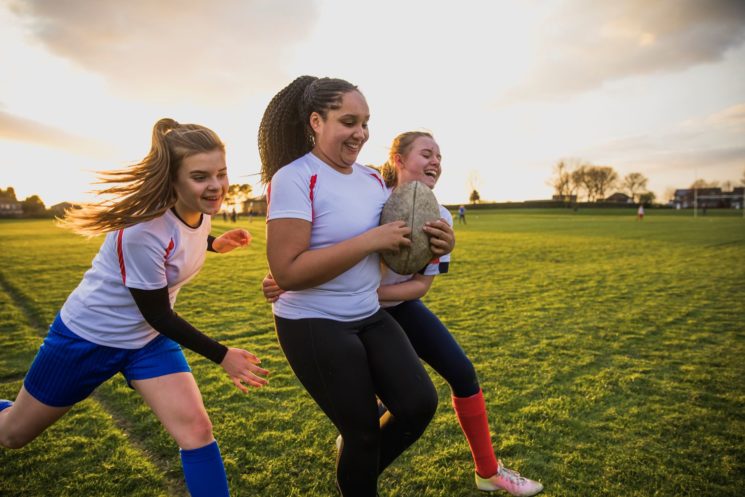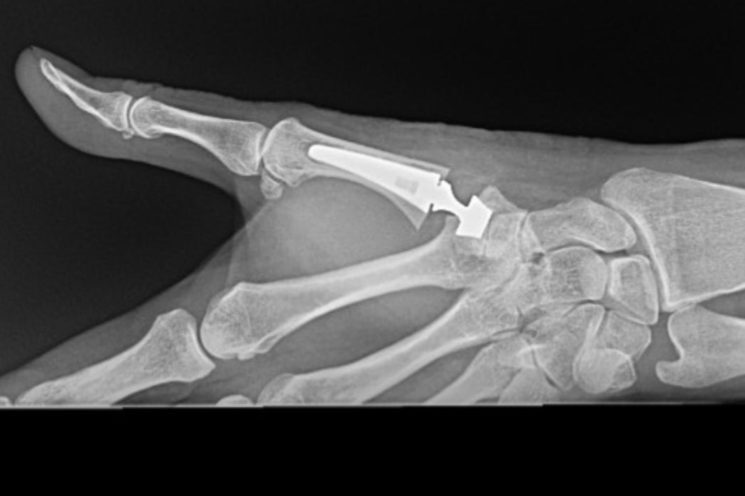
Rugby is a close-contact, physically demanding sport and injuries can range from minor cuts and bruises to more serious fractures and concussions. By understanding the most common injuries, their causes, and prevention strategies, players can make informed choices to help keep themselves and their teammates safe on the pitch.
Causes of rugby injuries
There are several reasons why rugby players may experience injuries on the pitch, including:
- High-impact collisions – Rugby is well-known for the amount of forceful contact involved in its scrums, tackles, and rucks. Unfortunately, this can often result in concussions, bone fractures, and more.
- Lack of protective gear – It is important that players are equipped with the correct gear to reduce their risk of injury on the pitch. Properly fitted mouthguards and headgear can help limit the occurrence of head and facial injuries.
- Poor technique – Incorrect tackling techniques can increase the risk of injuries to both the tackler and the tackled player. Coaches and trainers should focus on teaching proper technique and positioning.
Knee ligament injuries
Sudden twisting movements or changes of direction are a common cause of knee injuries, which account for 1 in 5 of all rugby related injuries. Commonly a ligament within the knee becomes overstretched or torn, which leads to pain and swelling. The anterior cruciate ligament (ACL), which controls rotation of the tibia (shinbone), is most likely to be affected, although the posterior cruciate ligament (PCL) can also be damaged by a direct blow to the knee. These injuries may require referral to a specialist for assessment and treatment.
Also explore our top tips for children experiencing knee pain.
Fractured collarbone
The collarbone (clavicle) connects your chest bone (sternum) to the tip of your shoulder (scapula), and it often becomes fractured as a result of trauma. Collarbone fractures are a particularly frequent occurrence in contact sports like rugby, where tackles and scrums risk a direct blow to the shoulder. Unless particularly badly broken, a fractured collarbone does not generally require surgery – most cases can be managed conservatively by holding the arm in position using a sling.
Concussion
Concussions are a type of traumatic brain injury that require immediate treatment. Contrary to popular belief, only around 10% of concussion cases involve a loss of consciousness. Immediate symptoms may include seizures, balance problems, confusion or disorientation, while symptoms that develop within the following 48 hours may include headaches, dizziness, memory loss, nausea or vomiting, and fatigue. Concussions must be treated promptly to prevent long-term complications, and players who sustain more than two concussions per year may need specialist care to ensure continued good health.
Flexor tendon injuries
Flexor tendons are strong cords that connect muscles to bone and allow you to move your fingers. A common type of flexor tendon injury found in rugby players is called jersey finger, which occurs when one player grabs hold of another’s top while they are running away. This causes the tendon to separate from the bone and may also result in a bone fracture. Surgery is often the most effective route to treat this type of injury and ensure a full restoration of movement to the finger.
Preventing rugby injuries
Learning how to prevent rugby injuries can help keep everyone safe on the pitch. This includes:
- Regular conditioning and fitness training – Strengthening muscles, improving flexibility, and enhancing endurance can reduce the risk of injuries. Specific training should target areas prone to injury, such as the hamstrings.
- Education on safe play – Players should understand the rules and techniques of safe play to minimise the risk of injuries, including proper tackling, rucking, and scrummaging techniques.
- Adequate rest and recovery – Fatigue increases the likelihood of injuries, so players should allow time for rest and recovery between matches and training sessions. Proper warm-up and cool-down routines should be followed to prevent muscle strain.
- Wear the correct equipment – Although not required by most leagues, players can benefit from wearing a well-fitted mouthguard, headgear, shoulder pads, chest pads, and ear guards.
- Immediate first aid – If an injury does occur, prompt first aid can reduce its severity. The RICE technique (rest, ice, compression, and elevation) is commonly used as a first line treatment.
- Seek specialist care – Some injuries may require assessment from an orthopaedic consultant. Neglecting professional care can lead to complications or delayed recovery.
- Proper rehabilitation – Injured players may need to undergo specialist physiotherapy to ensure a full recovery and reduce the risk of re-injury.
About the consultant
Mr Saket Tibrewal is a Consultant Trauma and Orthopaedic Knee Surgeon, and a member of the specialist group Capital Orthopaedics & Sports Medicine. He has a wealth of experience in knee surgery, including keyhole knee surgery, knee ligament reconstruction, cartilage regeneration, partial and total knee replacement, and non-surgical treatment options for knee pain.



